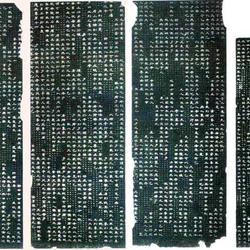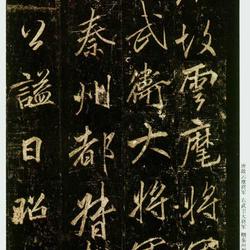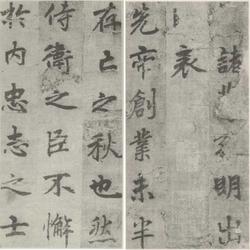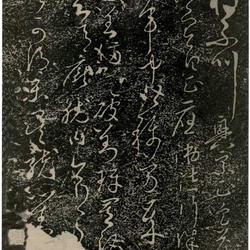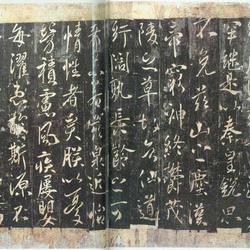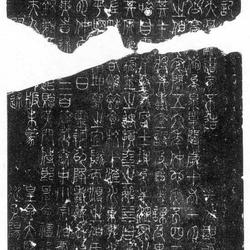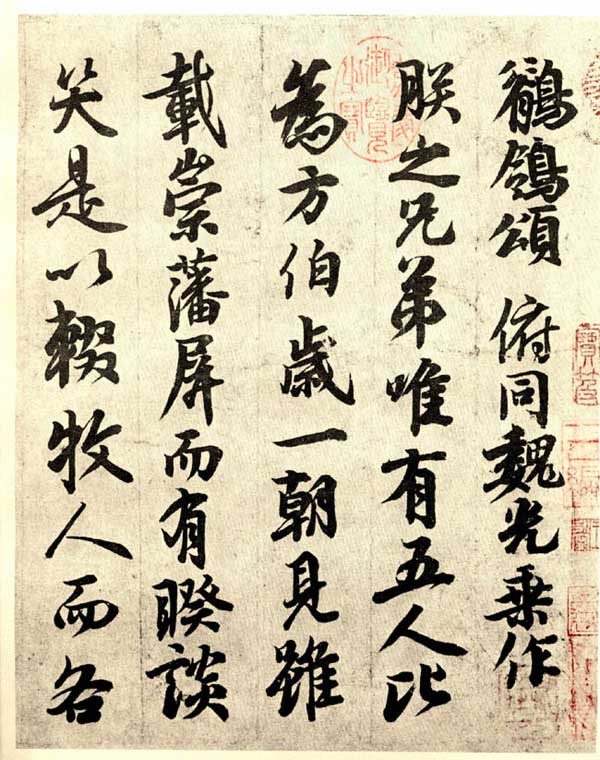
"Ode to the Wagtail" is suspected to be a double-hook edition, or may have been written by a court calligrapher. Paper. 26 cm long and 192 cm wide. Running script, 40 lines, 337 words. There are "Xuanhe", "Zhenghe", "Neifu Books Seal", "Buqujiang Seal", "Jin Mansion Books", "Wuting", "Shiqu Baoji", "Jiaqing", "Xuantong Yulanzhi" "Treasure" and other appraisal seals. It was once collected by the Imperial Palace of Song Dynasty, Xuanhe Palace of the Ming and Jin Dynasties, Wu Ting, and Imperial Palace of the Qing Dynasty. Later, it was postscripted by Cai Jing, Cai Bian, and Wang Wenzhi of the Qing Dynasty. It is now collected by the National Palace Museum in Taipei.
In "Ode to the Wagtail", the starting and closing strokes are straight and unique. The calligraphy style is majestic, the structure is rich, and the writing style is thick. Viewed from the whole picture, the calligraphy is tight, vigorous, rich and lush, with the typical style of the Tang Dynasty. The calligraphy was written between the "two kings" and gradually became plump, following the traditional family learning. He inherited the style of Chen Han from past dynasties. Zhang Chou of the Ming Dynasty commented on this post in his "Qinghe Painting and Calligraphy Boat": "The structure is precise and the brushwork is vertical and horizontal." Ming Zhan Jingfeng's "Dongtu Xuanlan Compilation" says: "The characters are very large in diameter, powerful and refreshing, and have a compelling air, which can be compared with Emperor Wen's order." "Cheng Jin Zhai Ji Wen Lu" written by Liang Gong in the Qing Dynasty says: "If you pause and set back, you will gain the interest of Chu and open the door to rice." "Calligraphy and Painting Notes" by Wu Qizhen of the Qing Dynasty also said: "The calligraphy is majestic, the structure is rich, and there is no wild atmosphere." "Xue Shu Yi Yan" by Yang Shoujing of the Qing Dynasty: "The emperor Ming Dynasty's stele tablets have developed a mature school. This calligraphy is soft and has bones, so it can be passed down by itself." This poem is the only copy of Tang Xuanzong's calligraphy and ink that has been handed down to the world, and it is rare in the Tang Dynasty. The treasure is known as a treasure in the world.

